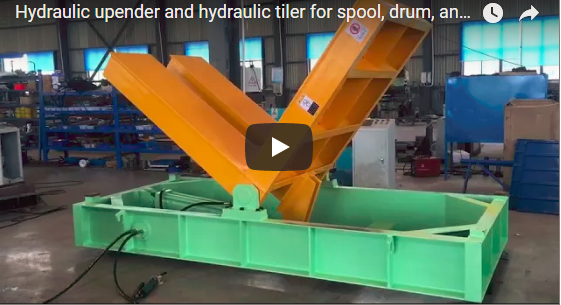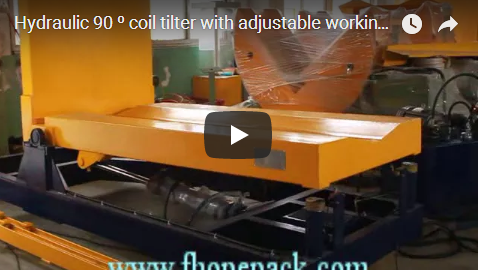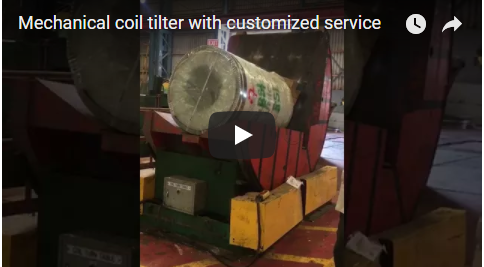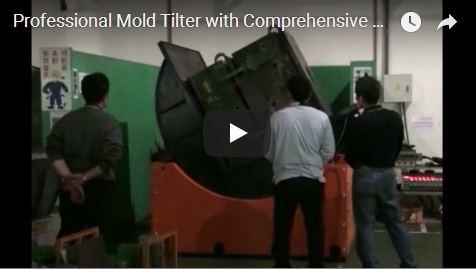Enhancing Workshop Safety and Efficiency with 180° Industrial Upenders
Handling heavy, cumbersome loads like steel coils, molds, dies, or paper rolls presents significant challenges in industrial environments. Manual handling or improper equipment usage can lead to personnel injuries, product damage, and operational bottlenecks. The 180° industrial upender, also known as a tilter or inverter, provides a robust engineering solution to safely and efficiently rotate these loads by a full 180 degrees.
1. Understanding the 180° Industrial Upender
The upender represents a specialized category of material handling equipment designed for the controlled inversion of substantial objects. These machines are pivotal in modern manufacturing, processing, and logistics operations, addressing critical safety and efficiency requirements. By automating the rotation process, they minimize manual intervention, thereby reducing the risk of accidents and musculoskeletal disorders often associated with heavy lifting and manipulation, aligning with [OSHA (Occupational Safety and Health Administration)] guidelines for safe material handling.
2. Operational Principles and Design Insights
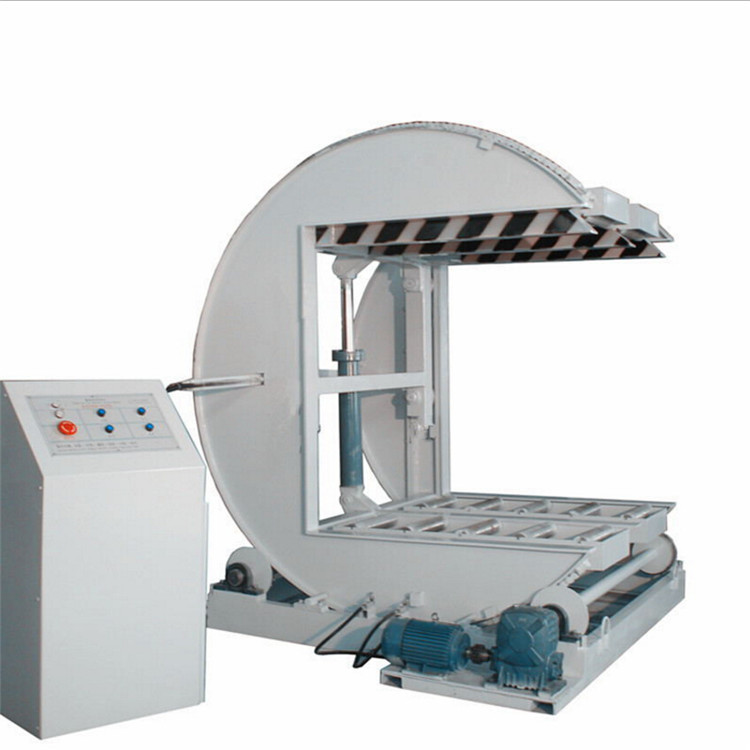
Industrial upenders typically employ either electro-hydraulic or electromechanical drive systems to achieve smooth and controlled rotation.
- Electro-hydraulic systems: Utilize hydraulic cylinders powered by an electric motor-driven pump, offering high load capacity and robust performance, suitable for extremely heavy-duty applications. Fluid power principles ensure high force density.
- Electromechanical systems: Employ electric motors coupled with gear reducers (like worm gear or planetary gear systems) and often incorporate mechanisms like screw jacks or slewing rings. These systems can offer precise control and potentially lower maintenance compared to hydraulics in certain environments. Research often focuses on optimizing gear geometry and motor efficiency for these systems (e.g., studies on energy consumption in electromechanical actuators).
The core structure consists of a stationary base frame and a rotating platform or cradle assembly. Stability is paramount, achieved through a low center of gravity, wide base footprint, and robust construction using high-strength structural steel (e.g., ASTM A36 or equivalent). The rotating mechanism, often a heavy-duty slewing ring bearing similar to those used in cranes and excavators, ensures smooth, reliable motion under load.
3. Key Features and Technical Specifications
When evaluating a 180° upender, several technical parameters are crucial:
Technical Data Overview:
- Load Capacity: 1 ton (approx. 2,200 lbs) to 50+ tons (approx. 110,000+ lbs), with custom designs available for higher capacities.
- Rotation Angle: 180° fixed for complete inversion.
- Rotation Speed / Cycle Time: Typically 45 to 180 seconds for a full 180° rotation, varying based on drive type, load size, and required control profile (includes controlled acceleration/deceleration).
- Drive Systems:
- Electro-hydraulic: Specifies pump motor power (kW/HP), system pressure (bar/psi), and flow rate (lpm/gpm).
- Electromechanical: Features high-torque gear motors (e.g., from manufacturers like SEW Eurodrive or NORD) with defined gear ratios and service factors.
- Platform Dimensions: Customizable to suit load footprint (e.g., 1200mm x 1200mm up to 3000mm x 3000mm or larger).
- Platform Surface: Options include flat steel plate, anti-skid checker plate, polyurethane coating, V-saddles for coils (see examples in coil handling patents), integrated powered roller or chain conveyors.
- Frame Construction: Fabricated from heavy-gauge structural steel tubing or beams, often verified using Finite Element Analysis (FEA) to ensure structural integrity under maximum load and operational stresses.
- Bearing System: Large-diameter slewing ring (cross-roller or ball bearing type) or heavy-duty roller bearings designed for high axial, radial, and moment load capacity.
4. Control Systems and Safety Features
Modern upenders incorporate sophisticated control and safety systems for reliable operation and operator protection:
- Control Interface: Options range from simple push-button pendant control on a coiled cord or fixed panel, to wireless remote controls for enhanced operator mobility, up to full integration into centralized PLC (Programmable Logic Controller) systems via industrial networks like EtherNet/IP or PROFINET.
- Safety Features (Compliance Focus): Adherence to safety standards is critical. Standard and optional features include:
- Emergency stop buttons located on the control panel and potentially around the machine perimeter.
- Electrical and/or mechanical limit switches to precisely control the start and end points of rotation.
- Drive system overload protection (hydraulic pressure relief valves or electric motor thermal/current overload relays).
- Optional Safety Guarding: Physical perimeter fencing with electronically interlocked access gates, light curtains, or area safety scanners to detect personnel presence and halt motion (designed according to standards like ANSI/RIA R15.06 for industrial machinery safety).
- Mechanical locking pins or failsafe braking systems to securely hold the platform in the tilted position during power loss or for maintenance access.
- Compliance Considerations: Design often references relevant standards such as ASME B20.1 (Safety Standard for Conveyors and Related Equipment) or applicable sections from the ASME B30 series (Safety Standards for Cranes, Hoists, etc.) where load handling principles apply.
5. Diverse Industrial Applications
The versatility of 180° upenders makes them indispensable across various sectors:
- Metals Industry: Safely rotating heavy steel coils, aluminum coils, wire rod coils, sheet packs, or billets for inspection, banding, processing line orientation, or storage. Significantly prevents edge damage often caused by C-hook or magnet handling.
- Tool & Die and Injection Molding: Flipping heavy molds and dies (often weighing several tons) for maintenance, cleaning, component changes, or setup in injection molding machines or stamping presses. Frequently cited in manufacturing efficiency improvement case studies.
- Paper and Printing: Turning large paper rolls or pulp bales to prevent deformation from storage ("flat spots") or to orient them correctly for unwinding stands on printing presses or converting lines.
- Automotive and Heavy Equipment Manufacturing: Handling large components like engine blocks, transmissions, vehicle chassis sections, large castings, or complex welded fabrications during various assembly or finishing stages.
- Logistics and Distribution: Orienting large, heavy, or awkwardly shaped pallets, crates, containers, or assembled units for optimal storage, shipping configuration, or access requirements.
6. Advancing Operational Safety and Efficiency
Implementing a 180° industrial upender yields substantial operational benefits, impacting both safety metrics and bottom-line performance:
- Enhanced Safety: Dramatically reduces the risks associated with manually attempting to turn heavy or unstable loads. Minimizes potential for severe crushing injuries, strains, sprains, and associated lost time incidents, contributing to a lower Total Recordable Incident Rate (TRIR).
- Product Protection: The smooth, controlled rotation prevents damage such as denting, scratching, or deformation to valuable products like finished metal coils, sensitive molds, or large paper rolls. This reduces scrap rates and costly rework.
- Increased Throughput: Automating the rotation process significantly cuts down handling time compared to using overhead cranes with complex rigging, multiple forklift maneuvers, or manual effort. Cycle times become predictable and repeatable, improving workflow efficiency.
- Improved Ergonomics: Eliminates the need for operators to adopt awkward postures or exert strenuous physical force, reducing fatigue and the long-term risk of musculoskeletal injuries. Feedback often highlights ease of use and reduced physical strain.
7. Integration and Customization Flexibility
Modern 180° upenders are designed for flexibility and can be seamlessly integrated into existing or new production lines and workflows:
- Conveyor Integration: Platforms can be equipped with built-in powered roller or chain conveyors, allowing for fully automated loading and unloading sequences as part of a larger material flow system.
- AGV/Forklift Compatibility: Designs typically incorporate appropriate clearances, loading heights, and platform configurations for easy loading and unloading by forklifts, Automated Guided Vehicles (AGVs), or other material handling equipment.
- Custom Fixturing: Platforms can be modified or equipped with custom clamps, V-blocks, adjustable supports, or specialized fixtures to securely hold non-standard or uniquely shaped loads during rotation.
- Environmental Modifications: Specialized designs are available for challenging environments, such as stainless steel construction for wash-down areas in food processing or pharmaceutical plants, or enhanced weatherproofing for outdoor installations.
- Control System Customization: Advanced control packages allow integration with higher-level plant control systems (MES/SCADA) for operational data logging, remote monitoring, diagnostics, and coordinated control within automated cells.
8. Conclusion: A Strategic Investment
The 180° industrial upender is far more than just a piece of material handling equipment; it is a strategic asset for enhancing operational safety, protecting valuable products, and boosting productivity in demanding industrial settings. By incorporating robust engineering principles, advanced drive and control systems, and comprehensive safety features compliant with modern standards, these machines provide a reliable and highly efficient solution for the critical task of inverting heavy and cumbersome loads. Investing in the appropriate upender technology, carefully specified and tailored to the unique requirements of an application, represents a crucial step for companies seeking to optimize their handling processes, ensure worker safety, and maintain a competitive edge in the dynamic landscape of manufacturing and logistics. Users consistently value the equipment's reliability and the tangible safety improvements realized after implementation.

